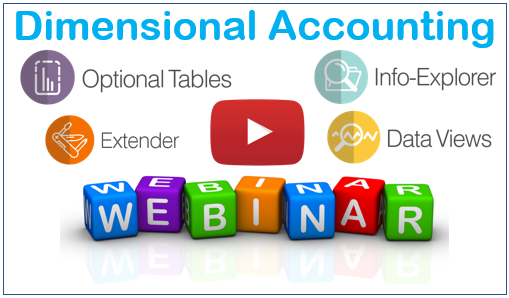The Why
Put simply, Dimensional Accounting aims to provide a highly granular view of your finances, without turning your Chart of Accounts into a monster.
Think of an event management business that needs to manage and report on expenses at the event level, but has:
- 3 divisions
- Each operating in 5 locations
- Each of which holds 2 events per month
Using traditional accounting, a single top-level GL account would need to be split into 3x5x24=360 event-level accounts.
And that’s just for one year! Not only have we created a monster, but the monster is reproducing!
The downsides are obvious. Not just the overheads of manually creating all those accounts, but the ever-growing risks and costs associated with data-entry error, GL reconciliation, and auditing. Plus the need for regular Chart of Account clean-ups to keep the hungry beast on its leash.
The What
The Dimensional Accounting approach is to maintain a simple, high-level GL structure, while leveraging the highly granular detail held at the transaction level. Or, to quote Mike DeRosa:
Dimensional Accounting is the ability to ask a GL account ‘What is in you? What the heck is going on in this account? Where did that balance come from?’
Let’s return to the example above, looking at the Event Dimension. The approach could be as simple as maintaining an Event table on your database, and adding an Event ID tag to each transaction.
The only missing link is a reporting tool that can provide flexible, tailored views of your transaction logs.
The How - in Sage 300
Some sophisticated ERP packages may promote themselves as being designed to support Dimensional Accounting, but you don’t necessarily need to go that far to realise the benefits.
Once you understand how powerful, yet simple, the concept is, it only takes a bit of imagination to integrate it into your existing accounting software. For Sage 300, that might mean:
- Using standard Sage 300 Optional Fields to add Dimension Tags (e.g. Event ID) to transactions.
- Using Orchid's Extender to hold additional non-financial data (e.g. Event details) in Custom Tables; simplify Optional Field data entry, treating them just like any other fields in the grid; and add validation rules to enforce correct use of Dimension tags.
- Using Orchid's Data Views to turn Optional Fields into columns, simplifying your dimensional reporting.
- Using Orchid’s Optional Tables to maintain your granular, dimension-level budget data (e.g. Event budgets).
- Using Orchid’s Info-Explorer to make your dimension-tagged transactions work for you: Create and save tailored views, slice and dice to analyse the data, roll up for dimension-level summaries, and drill right down to transaction level for detail. E.g., to analyse Actual vs Budget at Dimension level (e.g. per Event).
The Video
Dimensional Accounting was the subject of our March 2022 Orchid Webinar. To see the concepts above demonstrated and discussed in more depth, you can watch the video here:


